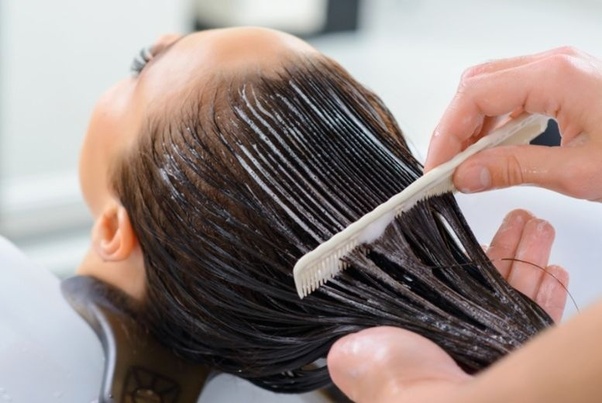A keratin treatment is often called a Brazilian blowout or Brazilian keratin treatment which is a chemical procedure that is usually done in a salon that can make your hair look straighter for as long as 6 months. It adds an intense glossy shine to hair and can reduce frizz.
The process involves getting your hair washed, then having a stylist brush the treatment onto wet hair where it will sit for about 30 minutes. Some hair stylists choose to blow-dry the hair first and apply the treatment to dry hair. They’ll then flat iron the hair in small sections to seal in the treatment. The whole process can take several hours if you’re not sure if keratin treatment is right for you, weigh the pros and cons below.
Keratin Hair treatment also called Brazilian hair or Brazilian blowout treatment, is a process that often smoothens and softens the hair. It comprises the application of certain treatments to the hair followed by blow-drying and hair ironing at the end. Keratin is a natural protein present in skin, hair and nail. Other added harmful ingredients like formaldehyde which is a potential carcinogen is also used. Keratin treatment comes with serious side effects. Some side effects like eye irritation, headaches, dizziness, sore throat, coughing, wheezing, nausea, chest pain, vomiting and rash have been reported. Formaldehyde is a part of which makes treatment so effective hence it’s difficult to keep it 100 percent free from formaldehyde. The FDA and ACS warns against formaldehyde, said Dr Rashmi’s Skin, Hair &Nail Clinic, Vasant Kunj, Senior Consultant Dermatologist.
Another possible side effect of keratin treatment is hair breakage. High temperatures from flat iron can dry out the hair and lead to hair breakage in the days to come.
Hence one must be opting out of such short term hairstyling treatments.
One can opt for a safer treatment free from formaldehyde like glyoxylic acid. But the latter may be less effective.

